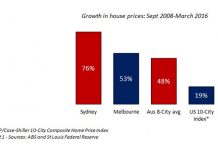Predicting the future is always a risky business. Accurately forecasting when changes will happen is impossible.
However if, like Kondratieff, we look at the economy as a series of cycles1, the events around the Wall Street Crash of 1929 and the Great Depression of the 1930s can alert us as to what may happen in the near future. (See graphs 1 & 2)
 Graph 1 – Source: St Louis Federal Reserve
Graph 1 – Source: St Louis Federal Reserve
 Graph 2 – Source: NYSE
Graph 2 – Source: NYSE
The Roaring Twenties
Let’s take the 1920s as an example. The Roaring Twenties: a time when average Americans suddenly had more money in their pockets than ever before; a time of booming consumerism and, towards the end of the decade, investing in the stock market.
In fact, the rush to become a consumerist society was merely part of the surge in American urbanization – the urban population rose from 28% in 1880, just under 40% in 1900 to over 51% in 19202. Whilst the cities prospered, this trend also meant that the agricultural sector suffered greatly:3 a factor which in itself has been cited as a factor leading to the 1929 Crash4. Consequently, 1920s USA suffered a significant disparity of wealth, the likes of which we have not seen… until today. (See Graph 3)
 Graph 3 – Source: Washington Center for Equitable Growth
Graph 3 – Source: Washington Center for Equitable Growth
Another similarity between the 1920s and the 2000s is the level of confidence in the strength of the markets and the overall economy. Key players shared an unswayable belief that the economy could take a downturn as it had in the past.
Stock prices have reached what looks like a permanently high plateau.
– Irving Fisher (economist), 15th October 1929 (9 days before Black Thursday).
At this juncture […] the impact on the broader economy and financial markets of the problems in the sub-prime markets seems likely to be contained.
– Ben Bernanke, (chairman of the Federal Reserve), 28th March 2007 (by 3rd April, over 50 mortgage companies had declared bankruptcy in 2007, including highly-respected New Century).5
This is far and away the strongest global economy I’ve seen in my business lifetime.6
– Henry Paulson, (US secretary of the Treasury), 12th July 2007 (1 month before BNP Paribas froze 3 funds, acknowledging risk of exposure to sub-prime mortgage markets.
There had already been a drop in prices in March 1929, which had caused panic before Charles E. Mitchell’s National City Bank provided USD 25 million of credit to prevent the market from dropping further.7 However the rise was temporary and the overall US economy was flagging, with industrial production symptomatic of the slump. If we compare industrial production figures of the early twentieth century with those of today, the similarities are uncanny. (See Graph 4)
 Graph 4 – Source: St. Louis Federal Reserve
Graph 4 – Source: St. Louis Federal Reserve
Furthermore, consumer debt tripled in the 1920s reaching around USD 7 billion in 1929. This was because, for the first time, middle-class Americans were able to buy on credit through buy now, pay later practices. Generous lines of credit were offered by department stores for families who were not able to pay upfront but who could demonstrate their ability to pay in the future. Instalment plans were also offered to buyers and more than half of the automobiles in the nation were sold on credit by the end of the 1920s.8 In the eight years before the Wall Street Crash, household debt levels in America more than doubled – a pattern that was replicated in the build-up to the GFC in 2008. (See Graph 5)
 Graph 5 – Sources: Historical Statistics of the United States & Federal Reserve Bank of New York
Graph 5 – Sources: Historical Statistics of the United States & Federal Reserve Bank of New York
Footnotes:
1 http://www.investopedia.com/terms/k/kondratieff-wave.asp
2 US Census Bureau
3 Dan Bryan (2012). The Great (Farm) Depression of the 1920s, American History USA
http://www.americanhistoryusa .com/great-farm-depression-1920s/
4 http://eh.net/encyclopedia/the-1929-stock-market-crash/
5 http://www.washingtonpost.com/wp-dyn/content/article/2007
/04/02/AR2007040200591.html
6 http://archive.fortune.com/magazines/fortune/fortune_
archive/2007/07/23/100134937/index.htm
7 Jerry W. Markham, A Financial History of the United States:
From Christopher Columbus to the Robber Barons
(1492-1900), M.E. Sharpe 2002
8 http://www.thebubblebubble.com/roaring-twenties-bubble/




